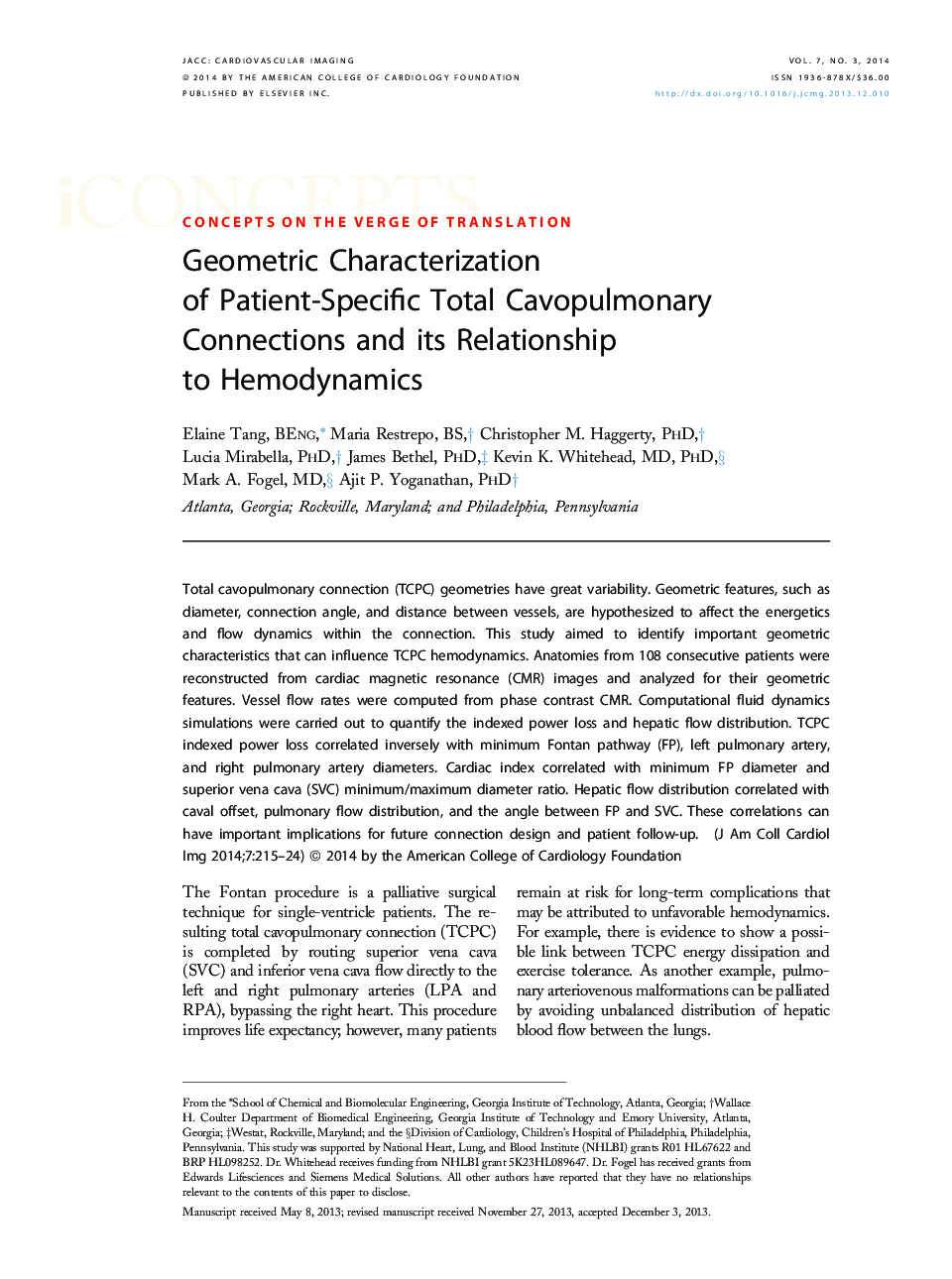| Article ID | Journal | Published Year | Pages | File Type |
|---|---|---|---|---|
| 2938105 | JACC: Cardiovascular Imaging | 2014 | 10 Pages |
Total cavopulmonary connection (TCPC) geometries have great variability. Geometric features, such as diameter, connection angle, and distance between vessels, are hypothesized to affect the energetics and flow dynamics within the connection. This study aimed to identify important geometric characteristics that can influence TCPC hemodynamics. Anatomies from 108 consecutive patients were reconstructed from cardiac magnetic resonance (CMR) images and analyzed for their geometric features. Vessel flow rates were computed from phase contrast CMR. Computational fluid dynamics simulations were carried out to quantify the indexed power loss and hepatic flow distribution. TCPC indexed power loss correlated inversely with minimum Fontan pathway (FP), left pulmonary artery, and right pulmonary artery diameters. Cardiac index correlated with minimum FP diameter and superior vena cava (SVC) minimum/maximum diameter ratio. Hepatic flow distribution correlated with caval offset, pulmonary flow distribution, and the angle between FP and SVC. These correlations can have important implications for future connection design and patient follow-up.
